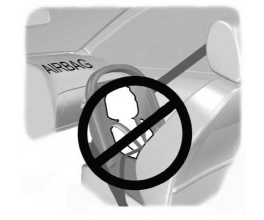Lincoln Aviator: Engine Cooling - 3.0L EcoBoost / Removal and Installation - Degas Bottle
Special Tool(s) / General Equipment
| Fluid Suction Gun | |
| Hose Clamp Remover/Installer | |
| Locking Pliers |
Removal
.jpg) WARNING:
Always allow the engine to cool before opening the cooling
system. Do not unscrew the coolant pressure relief cap when the engine
is operating or the cooling system is hot. The cooling system is under
pressure; steam and hot liquid can come out forcefully when the cap is
loosened slightly. Failure to follow these instructions may result in
serious personal injury.
WARNING:
Always allow the engine to cool before opening the cooling
system. Do not unscrew the coolant pressure relief cap when the engine
is operating or the cooling system is hot. The cooling system is under
pressure; steam and hot liquid can come out forcefully when the cap is
loosened slightly. Failure to follow these instructions may result in
serious personal injury.
NOTE: Removal steps in this procedure may contain installation details.
-
.jpg)
.jpg)
Release the cooling system pressure by slowly turning the degas bottle cap between 2 and 3 turns and remove the degas bottle cap..jpg) WARNING:
When releasing the cooling system pressure, cover the coolant expansion tank cap with a thick cloth.
WARNING:
When releasing the cooling system pressure, cover the coolant expansion tank cap with a thick cloth.
.jpg) |
-
Using general tools clamp the lower expansion tank hose and syphon the engine coolant from the expansion tank.
Use the General Equipment: Fluid Suction Gun
Use the General Equipment: Locking Pliers
.jpg) |
-
Remove the bolt and position the degas bottle.
Torque: 44 lb.in (5 Nm)
.jpg) |
-
-
Detach the electrical wiring harness retainer and the coolant hose retainer.
-
Release the clamps and disconnect the coolant hoses.
Use the General Equipment: Hose Clamp Remover/Installer
-
Remove the degas bottle.
-
Detach the electrical wiring harness retainer and the coolant hose retainer.
.jpg) |
Installation
-
To install, reverse the removal procedure.
-
Fill the degas bottle with the recommended coolant mixture and fill level.
Refer to: Specifications (303-03A Engine Cooling - 3.0L EcoBoost, Specifications).
 Removal and Installation - Cylinder Head to Coolant Outlet Connector Hose Assembly
Removal and Installation - Cylinder Head to Coolant Outlet Connector Hose Assembly
Special Tool(s) /
General Equipment
Hose Clamp Remover/Installer
Removal
NOTE:
Removal steps in this procedure may contain installation details...
 Removal and Installation - Radiator
Removal and Installation - Radiator
Removal
NOTE:
Removal steps in this procedure may contain installation details.
Remove the cooling module.
Refer to: Cooling Module (303-03A Engine Cooling - 3...
Other information:
Lincoln Aviator 2020-2025 Service Manual: Removal and Installation - Center Registers
Special Tool(s) / General Equipment Interior Trim Remover Removal NOTE: Removal steps in this procedure may contain installation details. Release the clips and remove the switch assembly. Disconnect the electrical connector...
Lincoln Aviator 2020-2025 Service Manual: Removal and Installation - Front Door Moulding
Removal NOTE: Removal steps in this procedure may contain installation details. NOTE: LH door shown, RH door similar. NOTE: Do not use excessive force when removing retainers, to avoid damage to moulding. Using a non-marring trim tool, disengage the retainers attaching moulding to the door...
Categories
- Manuals Home
- Lincoln Aviator Owners Manual
- Lincoln Aviator Service Manual
- Keyless Entry
- Wireless Accessory Charger (If Equipped)
- Drive Modes
- New on site
- Most important about car
Children and Airbags
WARNING: Airbags can kill or injure a child in a child restraint. Never place a rear-facing child restraint in front of an active airbag. If you must use a forward-facing child restraint in the front seat, move the seat upon which the child restraint is installed all the way back.

